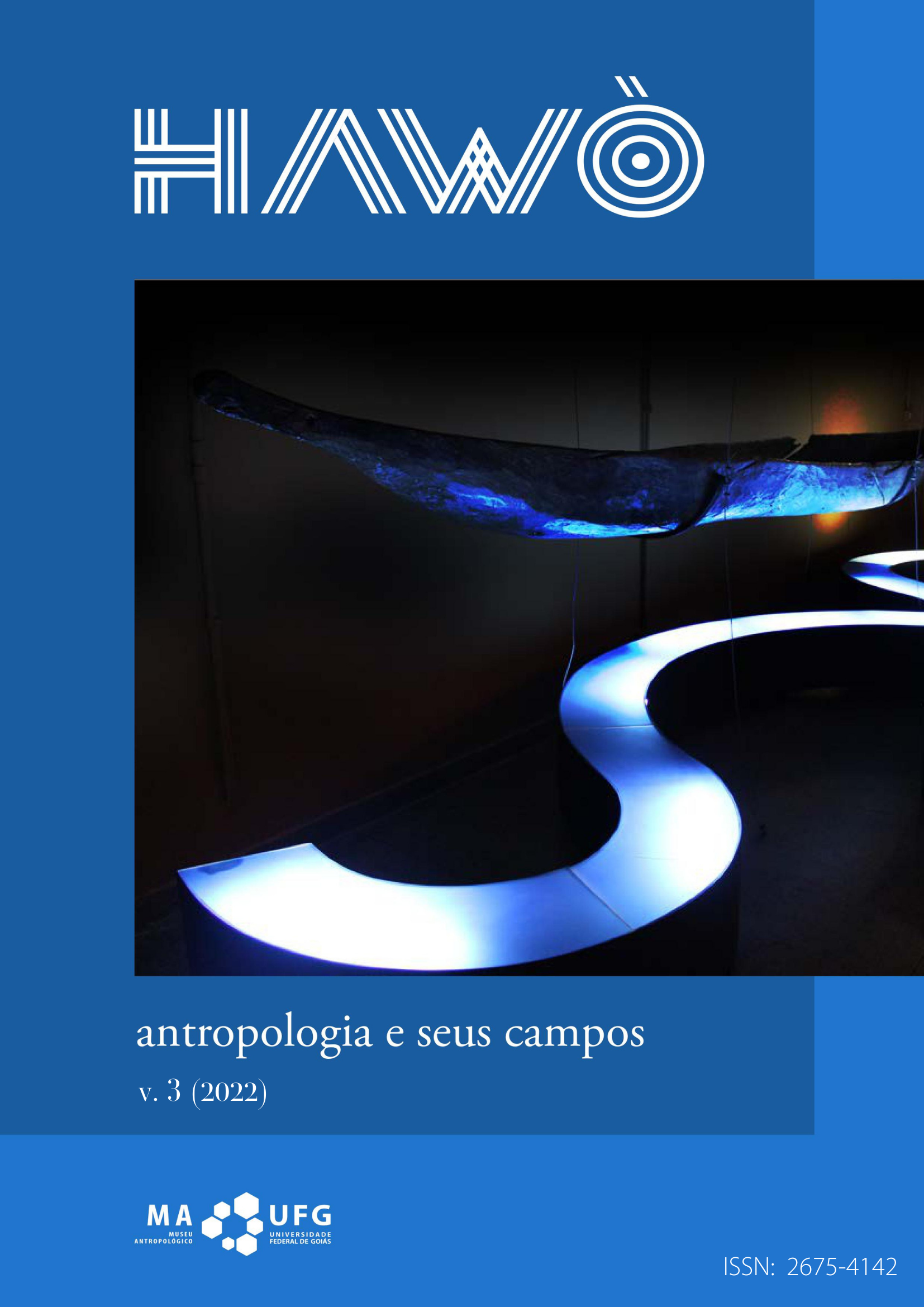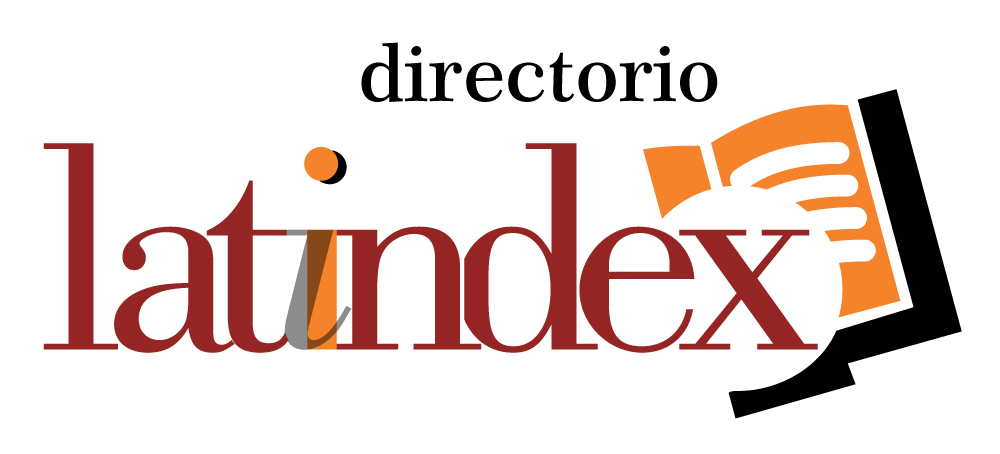Presença Karajá and the Fritz Krause collection
a critical understanding of “immaterial restitution” and the opportunities presented from collaborative “digital dissemination”
DOI:
https://doi.org/10.5216/hawo.v3.72251Palavras-chave:
Iny-Karajá. Ritxoko. Immaterial Restitution. Provenance. Social Museology.Resumo
This article describes the current cooperation between Presença Karajá, an interdisciplinary research project that maps
and analyzes collections of Iny-Karajá dolls (Ritxoko) in museum collections, and the GRASSI Museum for Ethnology in Leipzig, Germany, part of the Staatliche Kunstsammlungen Dresden (SKD). Together, the working group analyzed the collection of Ritxoko embedded in other Iny-Karajá materials, gathered and documented by Dr. Fritz Krause (1881-1963) in 1908. Based on Krause’s published works from his expedition, Iny-Karajá anthropological contributions, insights from Iny-Karajá representatives, and the
Ritxoko themselves, the working group investigated the provenance, ethnography, and anthropological data together, gathering valuable research results for the collection history as well as for the Iny-Karajá themselves. Presença Karajá offered the Museum
an opportunity to enhance the history of its collections as well as to contribute to a social museology, supporting the goals of what
the Museum calls “immaterial restitution” or more aptly, “digital dissemination”: granting Indigenous cultures greater sovereignty
over their heritage.
Referências
APPADURAI, A. The social life of things: commodities in cultural perspective. Cambridge, Cambridge University Press, 1986.
BAPTISTA, J. Entre o arco e o cesto: notas Queer sobre indígenas heterocentrados nos museus e na Museologia. Cadernos de Sociomuseologica, v. 61, n. 17, p. 43–65, 2021.
BOSE, F. V. Das Humboldt-Forum: eine ethnografie seiner planung. Berlim: Kadmos, 2016.
BOSE, F. V. Strategische reflexivität: das Berliner Hum- boldt Forum und die postkoloniale Kritik. In: HABERMAS, Burghartz. Historische Anthropologie: Kultur, Gesellschaft, Alltag. Thema: Globale Dinge. Cologne, Böhlau, v.3, 2017, p. 409-417.
BROGIATO, H. P. Herrmann Meyer. 2019. Disponível em: https://saebi.isgv.de/biografie/Herrmann_Meyer_(1871-1932). Acesso em:10 feb. 2022.
ICOM, Round table Santiago do Chile ICOM, 1972. “Sociomuseology” IV, Cadernos de Sociomuseologia, v. 38, p. 13–21, [s. d.].
DESVALLÉES, A.; MAIRESSE, F. Conceitos-chave de museologia. ICOM Brasil, Comitê Brasileiro do Conselho Internacional de Museus, 2013.
DUARTE CÂNDIDO, M. M.; MARTINS, L. C.; VIAL, A. D. Digital strategies for widening the scope of dissemination of indigenous cultures: the Presença Karajá Project and the Tainacan Platform. In: BERGERON, Yves, Michèle Rivet (Ed). The eecolonisation of museology: museums, mixing, and myths of origin, 2. Paris, France ICOFOM/ICOM, 2021, p. 90-94.
DUARTE CÂNDIDO, M. M.; VIAL, A. D.; ENTRATICE, H.; ANDRADE, R.; LIMA, N. C. de. Social museology and the Iny Karajá health campaign in Brazil. In: ICOFOM Study Series: Museology in tribal contexts, v. 49, n. 1, 2021. p. 77–90.
FRIEDRICH, S. Fritz Krause. 2019. Disponível em: saebi.isgv.de/biografie/Fritz_Krause_(1881-1963). Acesso em: 1 dec. 2022.
GRASSI Museum für Völkerkunde zu Leipzig (a). Das GRASSI Museum Leipzig. Disponível em: www.skd.museum/besuch/grassi-museum-leipzig/. Acesso em: 13 jan. 2022.
GRASSI Museum für Völkerkunde zu Leipzig (b) Sammlungen im Haus: Amerika. Disponível em: https://grassi-voelkerkunde.skd. museum/ueber-uns/sammlungen-im-haus/sammlung-amerika/. Acesso em: 26 jan. 2022.
HAHN, H. P.; HORNBACHER, A.; SCHÖNHUTH, M. “Frankfurter Erklärung“ zur Ethik in der Ethnologie. [s.l.] : Deutsche Gesell-schaft für Sozial- und Kulturanthropologie Mitgliederversamm lung, 2009.
HAMBURGER, M. Iny-Karajá Notes. 2021.
HARRIS, J. Embodiment in the museum: what is a museum? In: DAVIS, Mairesse (ed.). ICOFOM Study Series: New trends in Museology. Paris: ICOFOM, 2015. p. 101–115.
HARRISON, R. Heritage: critical approaches. London e New York, Routledge, 2013. p. 115-139.
HERMANNSTÄDER, A. Herrmann Meyer. Der Sertão als schwieriger sozialer Geltungsraum In Theordor Koch-Grünberg. Die Xingu Expedition (1898-1900) Ein Foschungstagebuch. Böhlau Verlag, 2004. p. 403-433.
KIPPENBERG, K. V.; GILS, H. V. Immaterial heritage. 2022. Disponível em: https://openheritage.eu/immaterial-heritage/. Acesso em: 24 mar. 2022.
KRAUS, M. Am Anfang war das Scheitern. Theodor Koch-Grünbergund die >zweite Meyer’sche Schingu- Expedition. In Theordor Koch-Grünberg. Die Xingu-Expedition (1898-1900) Ein Foschungstagebuch. Böhlau Verlag 2004. p. 453-496.
KRAUSE, F. (a). In den wildnissen brasiliens: bericht und ergebnisse der Leipziger Araguaya-Expedition, 1908. Leipzig, R. Voigtländer, 1911.
KRAUSE, F., SCHÜTZE, F. (1911). In the wilderness of Brazil: report and results of the Leipzig Araguaia Expedition of 1908. R. Voigtländer, 1911.
KRAUSE, F. (b). Die Kunst der Karajá-Indianer (Staat Goyaz, Brasilien), Baessler-Archiv II, 1, Berlim e Leipzig 1911. p. 1-31.
KRUSCHE, R. Unpublished material on the ethnography of the Upper Xingù Region* (Mato Grosso, Brazil). In: Jahrbuch des Museum für Völkerkunde zu Leipzig, Band 31. Berlin: Akademie-Verlag Berlin, 1977. p. 177–184.
LOGAN, W. S. Closing pandora’s box: Human Rights conundrums in cultural heritage protection. In: Cultural Heritage and Human Rights, ed. SILVERMAN, RUGGLES, New York, Springer, 2007, p. 33–52.
MOUTINHO, M. C. Evolving definition of Sociomuseology. In: “Sociomuseology” IV, Cadernos de Sociomuseologia, v. 38, Universidade Lusófona de Humanidades e Tecnologias, 2010, p. 27-31.
MINOM. Declaration of Quebec: basic principles of a new museology 1984. In: “Sociomuseology” IV, Cadernos de Sociomuseologia, v. 38, Universidade Lusófona de Humanidades e Tecnologias, 2010. p. -2325.
SAAR, F.; SAVOY, B. The restitution of African cultural heritage. Toward a new relational ethics. Transl. BURK. Ministère de la Culture. 2018, p. 3.
SAVOY, B. Africa’s struggle for Its art: history of a postcolonial defeat. Princeton University Press, 2022.
STOLER, L. Reading the Archival Grain: epistemic anxieties and colonial common sense. Princeton e Oxford, Princeton University Press 2011.
UNESCO. Basic texts of the 2003. Convention for the safe guarding of the intangible cultural heritage. France, 2020. p. 5.
USBECK, F. Ritxoko-Darstellung einer übernatürlichen Figur. 2021. Disponível em: https://skd-online-collection.skd.museum/ Details/Index/1576182. Acesso em: 24 mar. 2022.
VIVAN, I. What museum for Africa? In: RAHMAN. There is not yet a world. The postcolonial museum: The arts of memory and the pressures of history. Ashgate, 2014, p. 196.
WRÓBLEWSKA, M. Creating Visibility. In: ARIESE, C. E.; WRÓBLEWSKA, M. Practicing decoloniality in Museums: a guide with global examples. Amsterdam, Netherlands: Amsterdam University Press, 2022. p. 21-37.
ZERRIES, O. Ehrenreich, Paul. [s.l.] : Neue Deutsche Biographie, 1959. v. 4. Disponível em: https://www.deutsche-biographie.de/ pnd116383836.html#ndbcontent. Acesso em: 20 jan. 2022.
Downloads
Publicado
Versões
- 2022-11-29 (5)
- 2022-11-09 (4)
Como Citar
Edição
Seção
Licença
Copyright (c) 2022 Miriam Hamburger

Este trabalho está licenciado sob uma licença Creative Commons Attribution 4.0 International License.
Os(as) autor(es/as) que publicam na Revista Hawò são os responsáveis pelo conteúdo dos artigos assinados e detém os direitos autorais. Concedem à revista, o direito de primeira publicação com o trabalho simultaneamente licenciado sob a Licença Creative Commons Atribuição-Não Comercial (Open Archives Iniciative - OAI). Esse recurso, utilizado para periódicos de acesso aberto, permite o compartilhamento do trabalho para fins não comerciais com reconhecimento da autoria. Caso o texto venha a ser publicado posteriormente em outro veículo, o autor deverá informar que o mesmo foi originalmente publicado como artigo na revista Hawò. Assim sendo, ainda que a revista seja detentora da primeira publicação, é reservado aos autores o direito de publicar seus trabalhos em repositórios institucionais ou em suas páginas pessoais, mesmo que o processo editorial não tenha sido finalizado.
É reservado à revista, o direito de realizar alterações de ordem normativa, ortográfica e gramatical visando manter o padrão de língua, respeitando-se, porém, o estilo dos autores.






